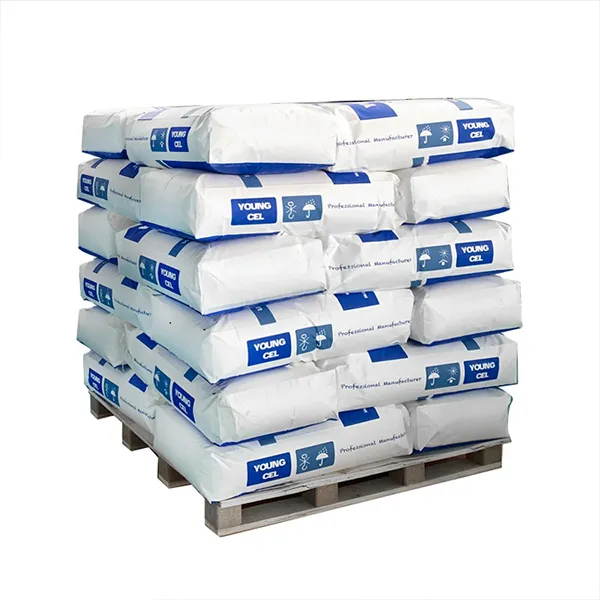Understanding HPMC for Gypsum Applications
Hydroxypropyl Methylcellulose (HPMC) has emerged as an essential additive in the construction industry, particularly for gypsum-based products. This non-ionic, water-soluble polymer offers unique properties that enhance the performance and workability of gypsum materials, which include plaster, wallboard, and other similar products. In this article, we will explore the significance of HPMC for gypsum applications, its benefits, and its role in improving construction processes.
What is HPMC?
HPMC is a cellulose derivative commonly used in various industries for its thickening, binding, and film-forming capabilities. Originally derived from natural cellulose, HPMC is modified to enhance its solubility and performance in aqueous environments. In construction, it is incorporated into gypsum materials to improve their physical properties.
Benefits of HPMC in Gypsum Applications
1. Improved Workability One of the most notable benefits of adding HPMC to gypsum-based products is the enhancement of workability. HPMC increases the viscosity of the mix, making it easier to apply and spread. This property is particularly beneficial for plasterers and contractors who require a smooth, consistent application surface.
2. Extended Open Time HPMC significantly increases the open time (the period during which the mixture remains workable) of gypsum products. This is crucial for large projects where workers need to manipulate and adjust the material without it setting too quickly. By extending the open time, HPMC allows for greater flexibility and improved finishing.
hpmc for gypsum

3. Water Retention One of HPMC's critical functionalities is its ability to retain water. Gypsum products, when mixed with HPMC, exhibit excellent water retention properties, which prevent premature drying and cracking. This feature is vital for the durability and longevity of the final surface.
4. Enhanced Adhesion The incorporation of HPMC into gypsum-based materials enhances their adhesion to various substrates. This is particularly important for applications where gypsum products are applied directly onto walls or ceilings. Improved adhesion helps to reduce the risk of delamination and increases the lifespan of the installation.
5. Reduced Shrinkage Gypsum products are prone to shrinkage as they dry. HPMC helps to mitigate this issue by providing a more uniform drying process. The result is reduced cracking and a better overall appearance of the finished product.
6. Customization HPMC can be tailored in terms of viscosity and other properties, allowing manufacturers to customize gypsum formulations to meet specific requirements. This flexibility is advantageous for creating specialized products for varied applications in construction.
Conclusion
Incorporating HPMC into gypsum-based products is transforming how materials are used in the construction industry. The substantial benefits of improved workability, extended open time, water retention, enhanced adhesion, reduced shrinkage, and the ability to customize formulations make HPMC an invaluable additive for gypsum applications. As the construction industry continues to evolve, embracing innovative solutions like HPMC will be vital for improving the quality and efficiency of building practices. Whether it’s for plastering, dry wall applications, or creating textured finishes, HPMC is set to play a critical role in shaping the future of gypsum construction products.
-
Premium Detergent Grade HPMC Hydroxypropyl Methylcellulose: Superior Thickening & StabilityNewsAug.31,2025
-
HEC 100000 Hydroxyethylcellulose for Paint | Superior ThickeningNewsAug.30,2025
-
Wall Putty Rdp Powder Packaging DesignNewsAug.29,2025
-
Introduction to Hpmc Hydroxypropyl Methyl CellulosNewsAug.29,2025
-
Hpmc Industri Grade IntegrationNewsAug.29,2025
-
How to Choose the Right Construction AdhesiveNewsAug.29,2025




